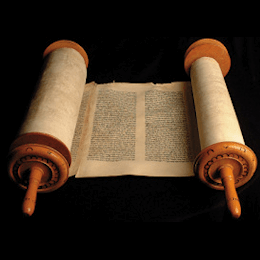Textus Receptus Bibles
Masoretic Text 1524
Old Testament
| 11:1 | ויאמר יהוה אל משׁה עוד נגע אחד אביא על פרעה ועל מצרים אחרי כן ישׁלח אתכם מזה כשׁלחו כלה גרשׁ יגרשׁ אתכם מזה׃ |
| 11:2 | דבר נא באזני העם וישׁאלו אישׁ מאת רעהו ואשׁה מאת רעותה כלי כסף וכלי זהב׃ |
| 11:3 | ויתן יהוה את חן העם בעיני מצרים גם האישׁ משׁה גדול מאד בארץ מצרים בעיני עבדי פרעה ובעיני העם׃ |
| 11:4 | ויאמר משׁה כה אמר יהוה כחצת הלילה אני יוצא בתוך מצרים׃ |
| 11:5 | ומת כל בכור בארץ מצרים מבכור פרעה הישׁב על כסאו עד בכור השׁפחה אשׁר אחר הרחים וכל בכור בהמה׃ |
| 11:6 | והיתה צעקה גדלה בכל ארץ מצרים אשׁר כמהו לא נהיתה וכמהו לא תסף׃ |
| 11:7 | ולכל בני ישׂראל לא יחרץ כלב לשׁנו למאישׁ ועד בהמה למען תדעון אשׁר יפלה יהוה בין מצרים ובין ישׂראל׃ |
| 11:8 | וירדו כל עבדיך אלה אלי והשׁתחוו לי לאמר צא אתה וכל העם אשׁר ברגליך ואחרי כן אצא ויצא מעם פרעה בחרי אף׃ |
| 11:9 | ויאמר יהוה אל משׁה לא ישׁמע אליכם פרעה למען רבות מופתי בארץ מצרים׃ |
| 11:10 | ומשׁה ואהרן עשׂו את כל המפתים האלה לפני פרעה ויחזק יהוה את לב פרעה ולא שׁלח את בני ישׂראל מארצו׃ |

Masoretic Text 1524
The Hebrew text of the Old Testament is called the Masoretic Text because in its present form it is based upon the Masora—the Hebrew, textual tradition of the Jewish scholars known as the Masoretes (or Masorites). The Masoretes were rabbis who made it their special work to correct the faults that had crept into the text of the Old Testament during the Babylonian captivity, and to prevent, for the future, its being corrupted by any alteration. They first separated the apocryphal from the canonical books, and divided the latter into twenty-two books, being the number of letters in the Hebrew alphabet. Then they divided each book into sections and verses.
There is a great difference of opinion as to when the Masoretic Text was written, but it was probably accomplished in the 10th -11th century. Several editions existed, varying considerably, but the received and authoritative text is that of Jacob ben-chayim ibn Adonijah, who carefully sifted and arranged the previous works on the subject. It was published in 1524.